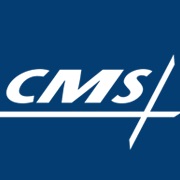CMS Comprehensive Primary Care Program Gained $57M in Savings
The CMS Comprehensive Primary Care initiative is a multi-payer platform that seeks to use national insurers to support population health management on the primary care level.

- Dr. Patrick Conway, Principal Deputy Administrator and Chief Medical Officer at the Centers for Medicare & Medicaid Services (CMS), announced in The CMS Blog that 95 percent of all primary care practices participating in the Comprehensive Primary Care (CPC) initiative have met care quality requirements. With 481 comprehensive primary care settings participating across seven regions, the majority has met care quality benchmarks and four out of seven regions have participated in shared savings.

The four regions that took part in cost savings include Arkansas, Colorado, Oregon, and the Greater Tulsa region in Oklahoma. The CMS Comprehensive Primary Care program has been relatively successful so far and was created to benefit Medicare beneficiaries through better healthcare delivery solutions and innovations meant to improve patient satisfaction and outcomes.
The Comprehensive Primary Care initiative has invested in multi-payer payment reform and medical data analytics to support the positive outcomes among the participating primary care practices. The program relied on having a large number of payers participating since this was tied to large scale public health management. Working with a few individual payers that would be responsible for only part of their primary care practice’s patient population wouldn’t have been enough, CMS reports on its website.
As such, the program has focused on attracting a multi-payer collaboration to make practice-wide transformations to primary care. The seven comprehensive primary care regions were selected after soliciting insurers countrywide.
“CPC is a multi-payer partnership launched by the Center for Medicare and Medicaid Innovation (Innovation Center) in October 2012 to advance primary care by paying clinicians to deliver accessible, comprehensive, and coordinated care in seven regions across the country,” Conway wrote in The CMS Blog. “CPC supports advanced primary care as the foundation of our health system. In addition to attending to patients’ acute, chronic, and preventive health care needs, primary care practices act as the quarterback of each patient’s healthcare team.”
Commercial healthcare payers not participating in the program may also benefit from working with other insurance companies and medical practices to improve population health outcomes starting at the primary care level.
Conway explains in The CMS Blog how this primary care program has benefited more than 376,000 Medicare beneficiaries since implementation. Last year was the program’s second performance year and it garnered $57.7 million in gross savings. The savings make up almost the entirety of the $58 million invested in renovating care management within the medical practices.
Some disadvantageous outcomes of the Comprehensive Primary Care initiative were the net losses experienced by three of the regions participating in the program. However, Conway explains that the savings generated in the other four regions accounted for the losses so that care management fees were offset by the lower cost of care in Medicare Part A and Part B coverage.
More than 50 percent of practices will share in $13 million in earned savings. The results from the program also show that hospital admission and readmission rates were reduced and patient satisfaction surveys were positive. Additionally, the practices performed better than national benchmarks on electronic Clinical Quality Measures (eCQMs) with 97 percent reporting these scores effectively.
“This is the first year CMS has included eCQM performance in Medicare shared savings determinations for CPC,” Conway wrote. “eCQM reporting covering the entire practice population at the practice site level is critical to using health information technology as a tool to support care delivery transformation.”
“eCQM data are recorded in the electronic health record in the routine course of clinical care, allowing practices to engage in real time quality improvement efforts that drive population health. As we move to a health care system that rewards value over volume, CPC practices are at the forefront of using eCQMs for quality improvement, measurement, and reporting.”
100 percent of all comprehensive primary care practices successfully reported on clinical depression screening surpassing national benchmarks while 99 percent reported colorectal cancer screening and influenza immunization at higher levels than national measures.
However, as reported by The New England Journal of Medicine earlier this year, the Comprehensive Primary Care initiative has brought improvements in the delivery of primary care but has not made inroads in reducing Medicare spending significantly, as the generated savings have not been “sufficient to cover care-management fees,” the report authors wrote.
The study found that the program boosts access to care and disease management in high-risk patient populations. Also, the number of primary care visits decreased by 3 percent. The number of hospitalizations did not drop as much as hoped, the study authors found.
However, the authors did mention that there may not have been enough time as of yet to fully implement the healthcare delivery transformations required of the program. Over the coming years, comprehensive primary care sites may be able to more quickly achieve the cost savings and quality improvements efforts required by the CMS program.
Dig Deeper:
How Medicare, Medicaid, and CHIP Guide the Health Payer Industry
Comprehensive Primary Care Plus Program Selects Anthem BCBS
